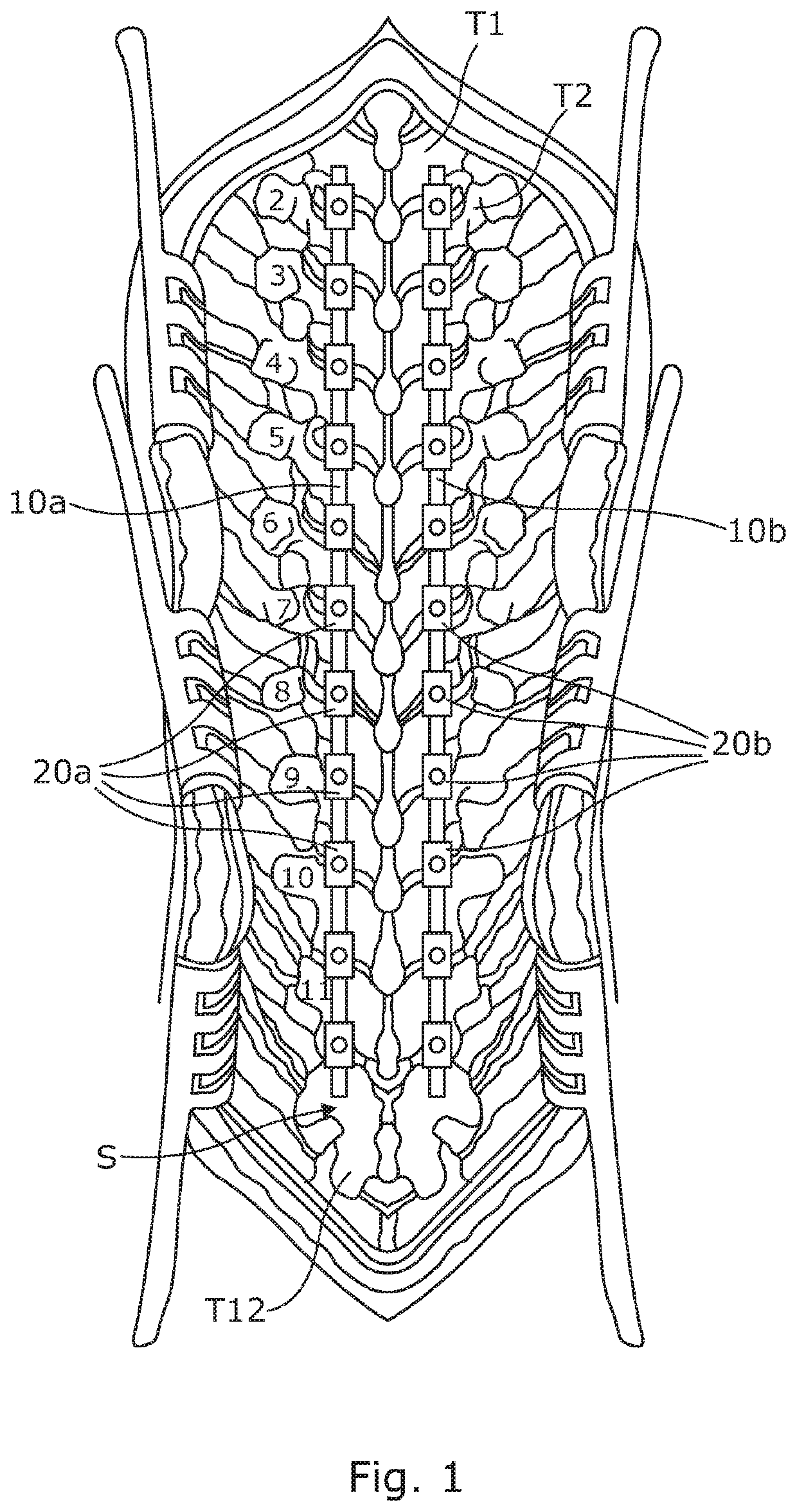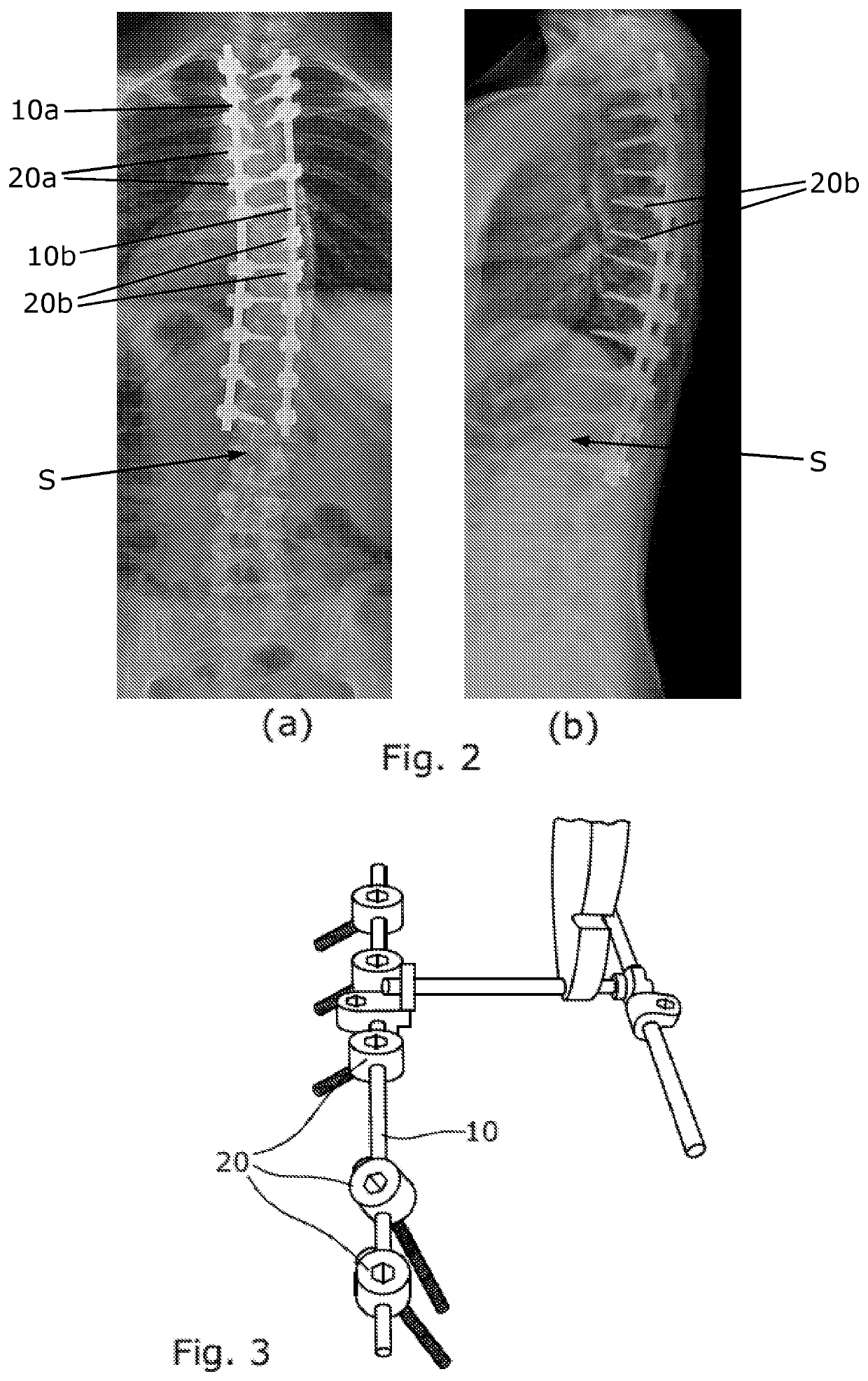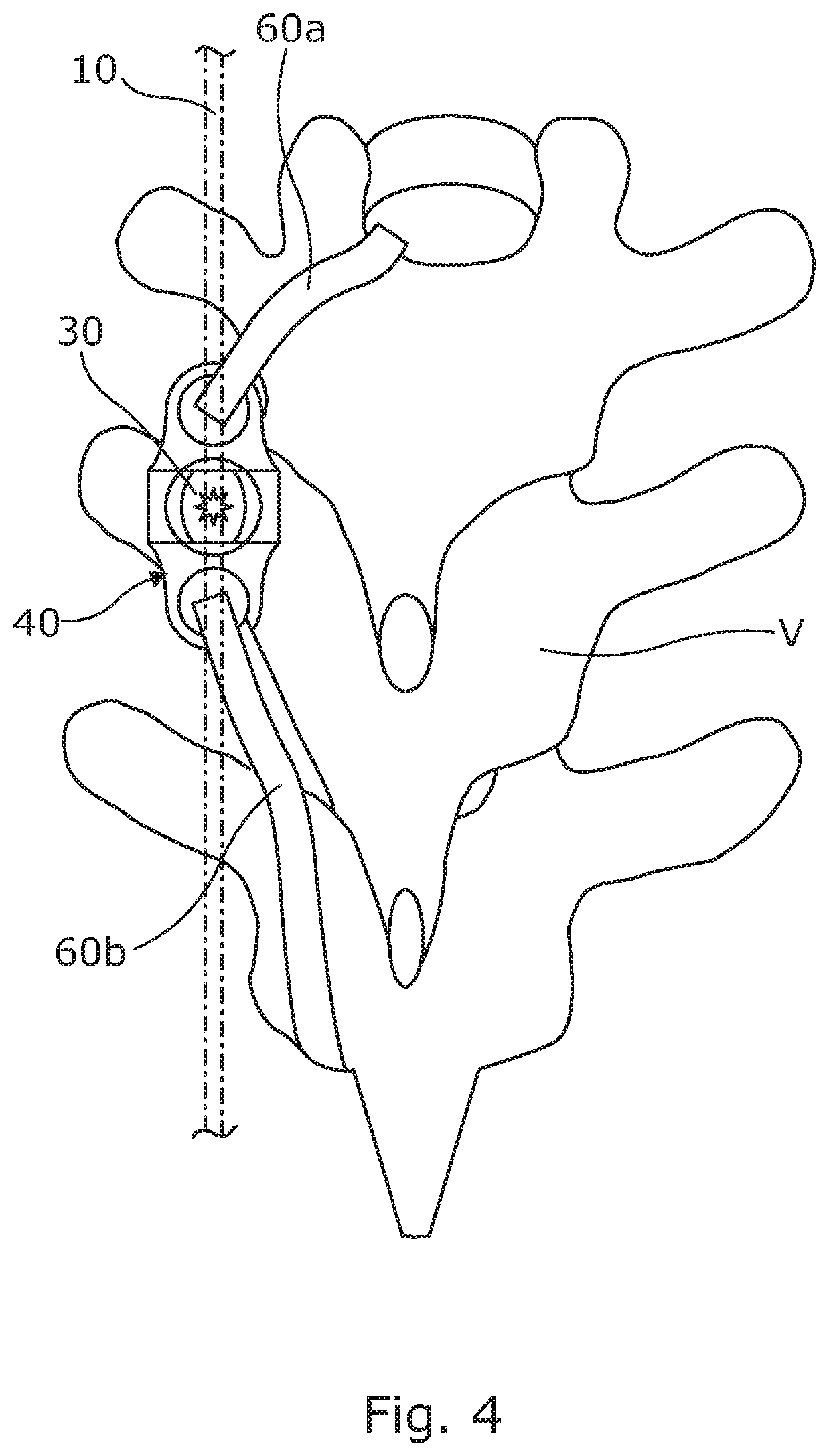Anchoring device for use in spinal deformity correction surgery
a technology for spinal deformation and anchoring, which is applied in the direction of osteosythesis devices, internal osteosythesis, bone plates, etc., can solve the problems of significant weakening of the rigid spinal structure created, the failure of the bone-screw interface, and the disadvantages of using pedicle screws
- Summary
- Abstract
- Description
- Claims
- Application Information
AI Technical Summary
Benefits of technology
Problems solved by technology
Method used
Image
Examples
Embodiment Construction
[0126]In the accompanying drawings, any specific dimensions (e.g. in mm or cm) that may be annotated thereon are to be considered to be non-limiting and for purely illustrative example purposes only.
[0127]Referring firstly to FIG. 1, this shows purely by way of an illustrative example a human spinal region, in posterior view, which has been exposed during spinal deformity corrective surgery to mount a pair of substantially rigid constructs or assemblies onto the various thoracic vertebrae (labelled conventionally as T1-T12) for the purpose of correcting a spinal deformity such as that caused by scoliosis. In this example, a pair of generally parallel stabilising rods 10a, 10b have been mounted on and secured to a respective series of screws 20a, 20b each of which has been inserted into the bone of a respective pedicle or other part of the relevant vertebra of the spinal column S. FIGS. 2(a) and (b) show the overall spinal implant arrangement more clearly in three dimensions in the f...
PUM
 Login to View More
Login to View More Abstract
Description
Claims
Application Information
 Login to View More
Login to View More - R&D
- Intellectual Property
- Life Sciences
- Materials
- Tech Scout
- Unparalleled Data Quality
- Higher Quality Content
- 60% Fewer Hallucinations
Browse by: Latest US Patents, China's latest patents, Technical Efficacy Thesaurus, Application Domain, Technology Topic, Popular Technical Reports.
© 2025 PatSnap. All rights reserved.Legal|Privacy policy|Modern Slavery Act Transparency Statement|Sitemap|About US| Contact US: help@patsnap.com



